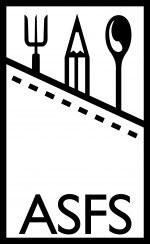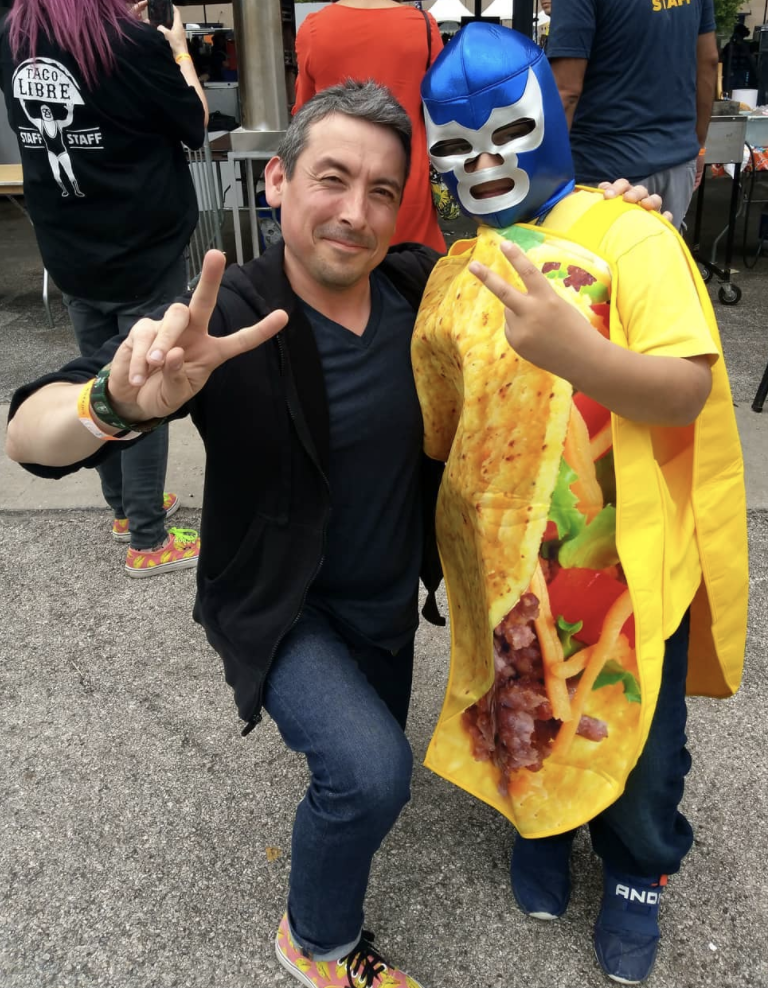
How did you become involved in ASFS?
I learned about ASFS after my research took a turn toward foodways, which itself was somewhat unexpected. As I moved into food studies, I gravitated to ASFS, to learn more about the field, the journal, and its conference, but also to gain community in a group of scholars from diverse academic foodways pursuits. I think what I have enjoyed in addition, but which I didn’t expect initially, was getting to know the graduate students of ASFS, of whom, I later learned, were big fans of my work, and my #TacoLiteracy social media presence. The ASFS graduate students invited me to speak at their conference in Chapel Hill a few years ago, and with that, I really started getting more involved in the organization further, and, later, tossing in my hat for the ASFS Teaching Award, which I won a few years back.
What can literary studies tell us about food, and what can food studies tell us about literature?
Both literature and food are expressions of human genius, and the humanities in this way have the duty to teach us about what makes us human, and our food and languages do that, together, but more importantly, food and literature have the potential to humanize experiences that differ from what we may experience in our day-to-day lives, from different perspectives than our own, and, hopefully, to challenge injustices and imagine a better world, and, yes, to make that our shared reality. For me, also, there’s nothing tastier than a good poem, and, likewise, I think of a good taco as tasty poetry.
What are ‘foodways literacies’?
Before defining that, I would have to define literacies. I define literacies are social practices, always embedded in power relations, situated within historical contexts. Literacies are not something people have or don’t have—thinking of literacy in this way is a trap, because it divides people, and, further, dehumanizes and serves to exclude those supposedly considered “illiterate.” Rather, conceiving of literacy as social practices moves away from have/have not and focuses on how people use their literacies as activities in their everyday lives. Note that I use the term “literacies” because in this way, we can imagine literacy practices moving beyond how we conceive of language, and into plural forms of learning and expression, including foodways. Foodways literacies, then, link the social, cultural, and economic practices related to the production and consumption of food to languages and literacies, that are local, but that also extend beyond national borders, situated across different spaces, identities, forms of knowledge, and migrations. In the book I’m writing about Mexican Foodways in New York City, I’ll delve into this further, so stay tuned.
For those who may not know can you describe what ethnographic research is, and give us any advice on how to do ethnography? Could you explain how you aim to develop confianza during this work?
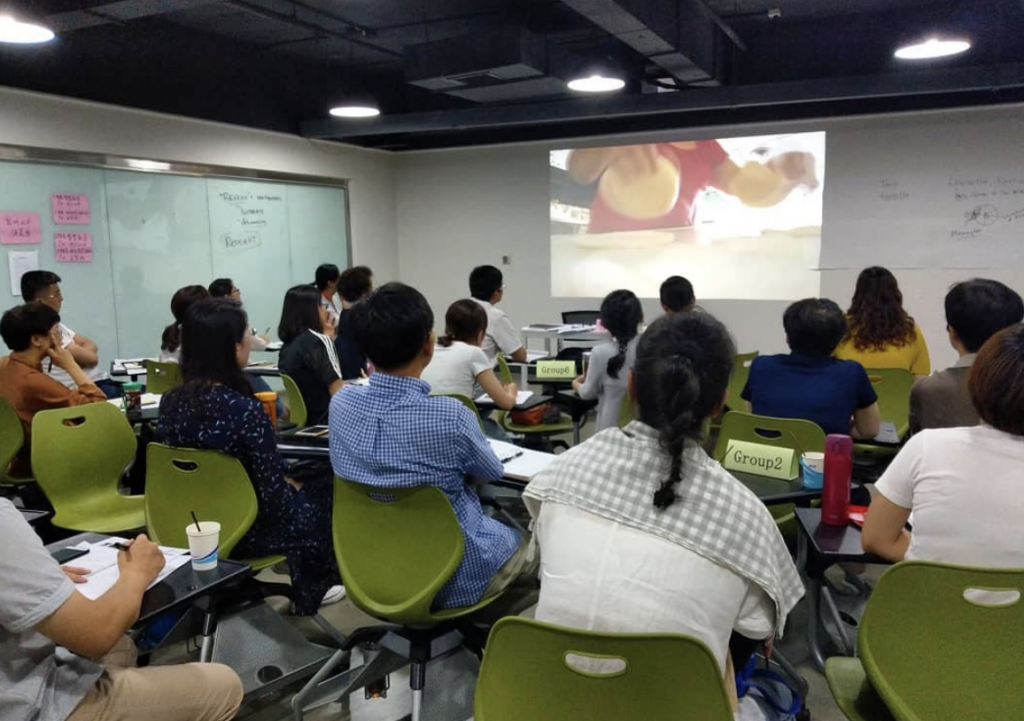
Ethnographic methods for qualitative research offer windows into communities at local scales, while, at least in the way I think about it, forming relationships, among community members, but also with committed researchers, whom, over time, become connected to communities, and, sometimes, members. That frame of research removes whatever norms may be understood for the so-called “objective” researcher, which I advocate for dismantling in the first place. We are always in what we study, no matter how much we may try to remove ourselves. In this way, in the Mexican and Latinx communities I learned from, reciprocal trust became foundational for what became of the relationship over time. Confianza, literally translated as “confidence” became something I earned with the communities I entered, because I dedicated my time to sharing a joy for literacies, bilingualism, and learning—but also because I also became a mentor for young people, who also reminded me of my nieces and nephews back in Arizona. Confianza is familiar, it’s trust, but I also conceive of it as care.
For ethnographers doing educational research with young people, or foodways research in communities, it’s important that the communities you study with know you care, that you are committed as much to them as you are to the research, and that you develop relationships with communities over time before beginning any study, developing bonds of confianza first and foremost. Finally, making critical connections between the micro to the macro is the final stage in this type of critical ethnography, one that keeps the local and global in dialogue, in theory and practice.
Can you tell us about your experience as an SFA Smith Symposium Fellow?
I mentioned in the first question that I came to foodways studies via a somewhat unexpected turn in my career. Right after finishing my PhD in 2012, I was assistant professor of Writing, Rhetoric, and Digital Studies at the University of Kentucky, where my research focused on literacies in bilingual after-school programs for Mexican families. As part of Hispanic Heritage month at UK in 2014, I helped to arrange for Gustavo Arellano, author of Taco USA, to deliver a lecture at the school. After his talk, I offered to treat Gustavo to my favorite tacos in Mexington, the Mexican barrio of Lexington—Tortillería y Taquería Ramírez. On the ride there, Gustavo, perhaps questioning my judgment, casually mentioned he was from Southern California, so he had a high bar for Mexican food. Well, Gustavo, like everyone else who has ever been to Tortillería y Taquería Ramírez, was blown away—especially by the tortillas made with the same corn from Weisenberger Mill, famous for grits. He clearly appreciated that, and at that point, we became buddies. Gustavo mentored me into the foodways scene, where I realized I could make an intervention, because in all the research I had done with Mexican families, sharing food was part of the confianza we developed as community. Exploring this with Gustavo, I later learned, somehow got my name around and the work I was doing, and then the SFA invited me to be a Smith Symposium Fellow.
Now, I have to say, the SFA Symposium was new to me, as were so-called “foodies.” I admit, it was somewhat strange for me at the first symposium in Oxford to see so many folks take photos of their plates and cocktails. But when it came to the SFA films, that’s where it hit me. Those stories were about people first, the stories of the South, and foods were there, but it was always people first. People first has also been how I have thought of my literacies studies research, and my teaching. From then on, with the guidance and opportunities to learn more about foodways studies, I came to gain a great deal from SFA experience, and my first support for the idea of Taco Literacy, which I first shared with the fellows in my cohort.
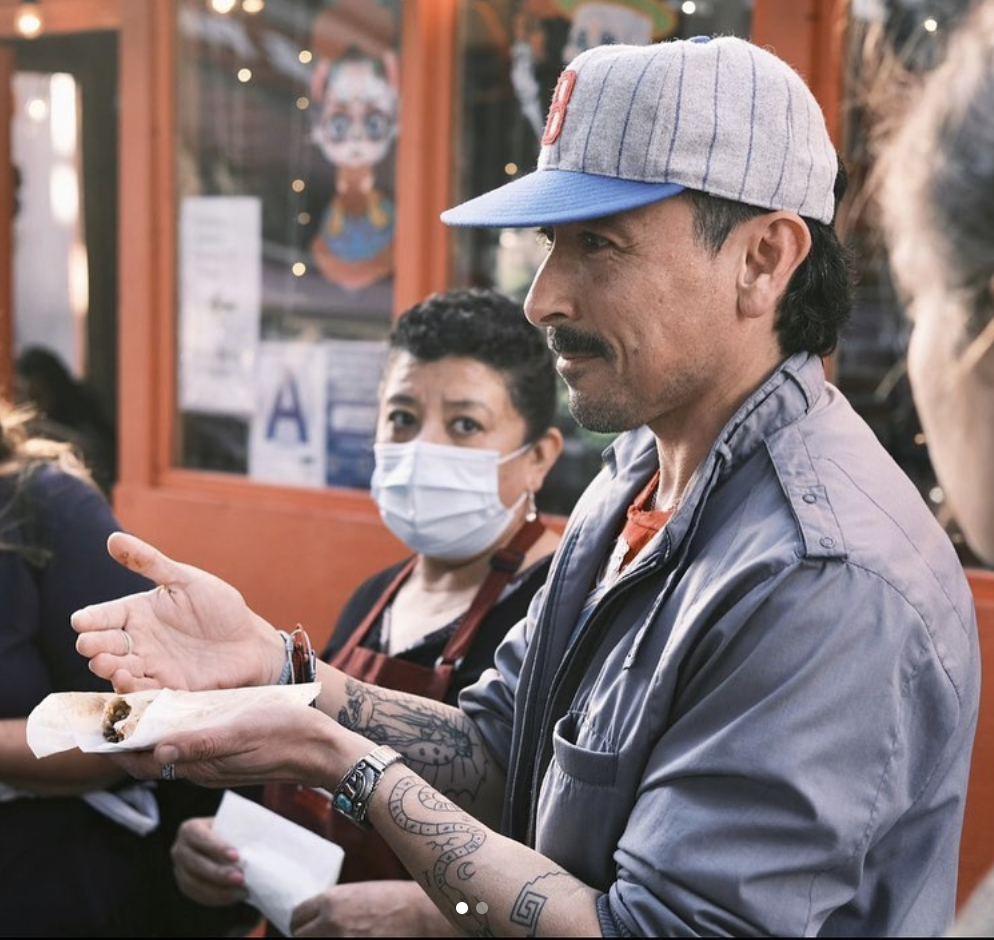
You have a very impressive record of community teaching and volunteer service – how do you find different organizations and initiatives to be a part of?
I reckon I could say that all started when I was young: Eagle Scout, sigh. It’s true, those experiences as a scout taught me to value service, and to understand that volunteering would be an essential part of the Steven Alvarez I wanted to be in the future. People first, right? I was involved with different service organizations growing up in rural Safford, Arizona, and later, between undergrad and graduate school, I served in AmeriCorps, first in the National Civilian Community Corps (NCCC) and then in the Volunteers in Service to America (VISTA) programs. In NCCC, I spent a year doing 10,000 hours of direct community service, ranging from Habitat to Humanity, Okefenokee Wildlife Refuge, the Appalachian Trail, and more. I lived in the South while doing that service, so I was able to learn more about the people and foodways of the South, as I did projects in South Carolina, Georgia, Alabama, Kentucky, and Tennessee. The experiences in NCCC also became a way for me to further understand how Mexican food and Mexican people extended beyond the borderlands, as I met many Mexican folks in the South. After that experience in NCCC and travelling around the South, I decided to do another year of service in AmeriCorps, but as a VISTA volunteer, and stationed in one place, Ketchikan, Alaska, where I completed another 10,000 hours of direct and indirect community service. There, I was an adult education instructor and organizer, and as project manager for a non-profit supporting local youth-led initiatives. It was in Ketchikan where I think I discovered how much I loved teaching, or at least got an inkling.
Now, last thing, I should say, when I started grad school, I thought about dropping out often. I missed the service work I was doing, and my English studies, I thought, removed me from real people. This changed once I started volunteering for an after-school program in NYC serving Mexican families, to help with homework and schooling. Over the course of time, and after a period of being part of that program, I realized I could write a dissertation that focused on the literacy practices of families in that community, one that educators rarely got to see. That became my first book, Translanguaging Tareas, and I’m proud that I never let go of staying connected to people, because that has made this work the most fulfilling.
You are also an accomplished poet – does your poetry influence your research and vice versa?
I consider myself a poet first before anything else, even before Taco Literacies, or my research in literacy studies. Reading and writing poetry is what brought me to the English major in the first place—because when I started college, I wanted to be an Engineer (I heard they made pretty good money). With some kind words from my English 101 and 102 professors who helped me to realize I was a good writer, and then the experience of an English general ed seminar where I first read William Blake, I gradually realized I loved the engineering of language, so to poetry I went.
My poetry finds expression different aspects of what I study, from Mesoamerican histories, geographies, literacies, sciences, economics, and I try to make sense of it all by experimenting with forms, mixing languages, and, really, trying to make the words find where I want to travel. I can say that something similar happens studying foodways, and bringing poetry to that has helped me to express some of the sensual elements of food.
This all goes to say, for anyone, read widely, and write widely, but always find what is closest to your heart for your love—and that one for me will always be poetry. Now taco poems, that might be where I go next. That joke I made earlier about tasty tacos/poems, that might be the start of that.
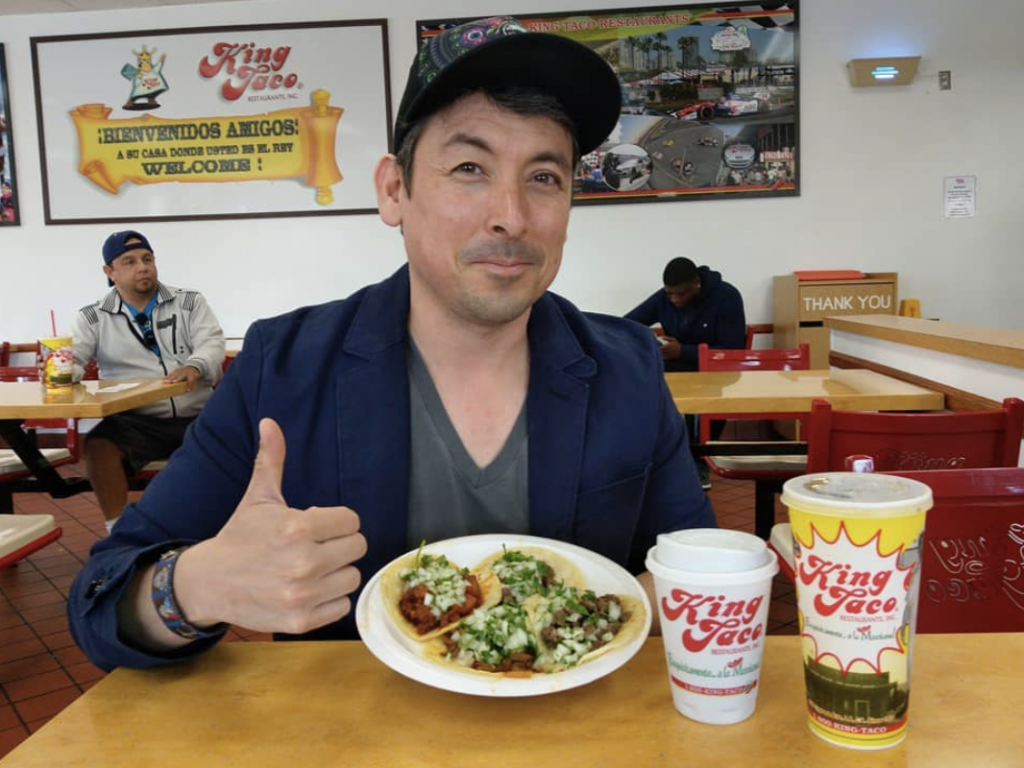
Can you tell us about the course you designed called “Taco Literacy: Writing Transnational Mexican Foodways”?
The first time I taught Taco Literacy was at the University of Kentucky, during the Spring 2016 semester. Before the class started, word got around social media because of an interview with me on Munchies titled “You can now study tacos at the University of Kentucky.” In a matter of minutes, Taco Literacy, the writing class about tacos I designed and piloted for the spring semester just days before, went viral, and I was being bombarded for interviews from publications all over the world. A class about tacos? I got basically two reactions: this is brilliant. The other reaction, well, more sceptic. But as I explained, and continue to explain, Taco Literacy is not just a class about eating tacos on a superficial level. Rather, to practice taco literacies are to examine the cultural, economic, and ecological dimensions of Mexican foodways. Indeed, taco literacies are Mexican foodways literacies, prisms for understanding the practices and relationships emerging amid Mexican people across transnational contexts. Taco literacies challenge decontextualized notions of Mexican foodways that remove Mexican people from their foodways. The best way I can describe what I do in the class is teaching this lesson: You can’t love Mexican food if you don’t love Mexican people. Punto.
I have since taught the course twice at St. John’s, where I teach now, in Queens, New York. I will be teaching another version, next semester, focusing on students developing their own foodways courses they would like to teach.
What advice or favorite resources do you have for those who want to develop their own courses from scratch?
Take that class I just mentioned, I guess. But really, start first with what your students know, and build on what they bring into the classroom. Our students are not empty vessels waiting to be filled with knowledge—that links directly with that literacy have/have not dichotomy. No, our students arrive in our classes full to overflowing with knowledge, from their lived experiences, their communities, and their educations—both formal and informal. In terms of foodways, we must always assume students know a thing or two about food, and that with that base, we can build into complicating those insights, perhaps even challenging received wisdom, and, hopefully, challenge scholarship as well.
What is a dish or foodstuff that you eat regularly?
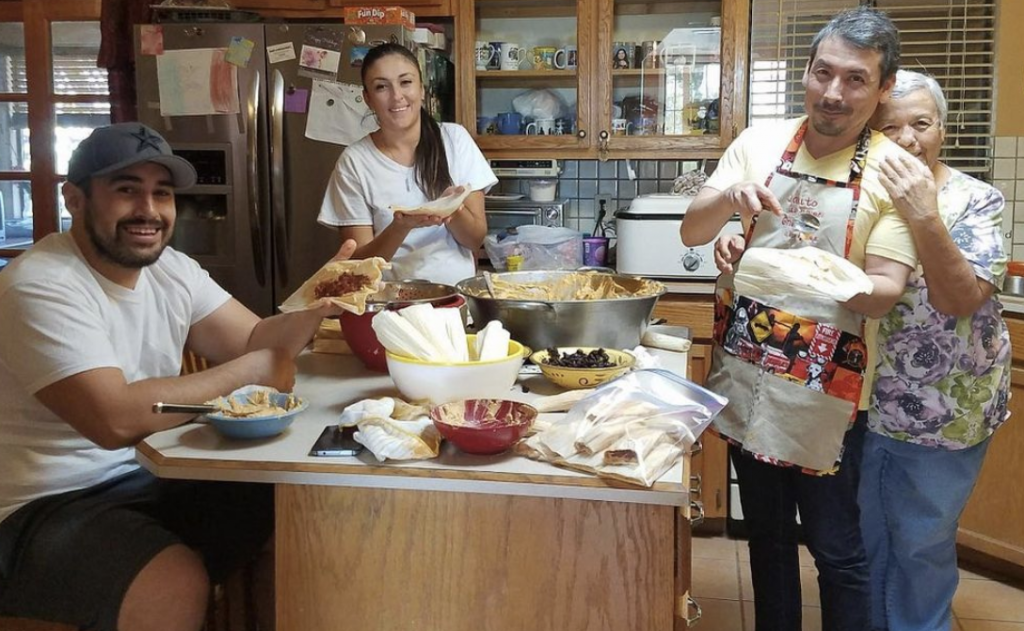
Every day I eat tortillas. Flour or corn? Both! Tortillas, but mostly flour tortillas, tortillas my family sends me from Arizona, or which I bring back when I visit—typically about 20 dozen each time. Let me tell you, too, TSA loves to see what’s in my tortilla carry-on.
My favorite tortillas, the ones that help me feel a piece of home across the continent are from Southeastern Arizona, from my hometown of Safford, the local tortilla factory called Mi Casa Tortillas. They also sell masa during the holidays, the same masa my family has used for years to make tamales. Mi Casa provides most of the corn and flour tortillas for the Gila Valley and surrounding communities of “copper country.” The flour tortillas from Mi Casa are slightly thicker than those from Sonora, a little bit more like the flour tortillas one might find in Texas—where the flour tortillas must do a lot of work to hold those guisados. I also pick up several dozen flour tortillas from neighboring Willcox, at La Unica Tortillería, from folks who hail from Agua Prieta, Sonora. Their tortillas de harina are the thin variety, like a sheet of paper, much thinner than those from Mi Casa, and more characteristic of Sonoran style. But I would say, I have never met a fresh flour tortilla made with manteca I could resist, en serio.
